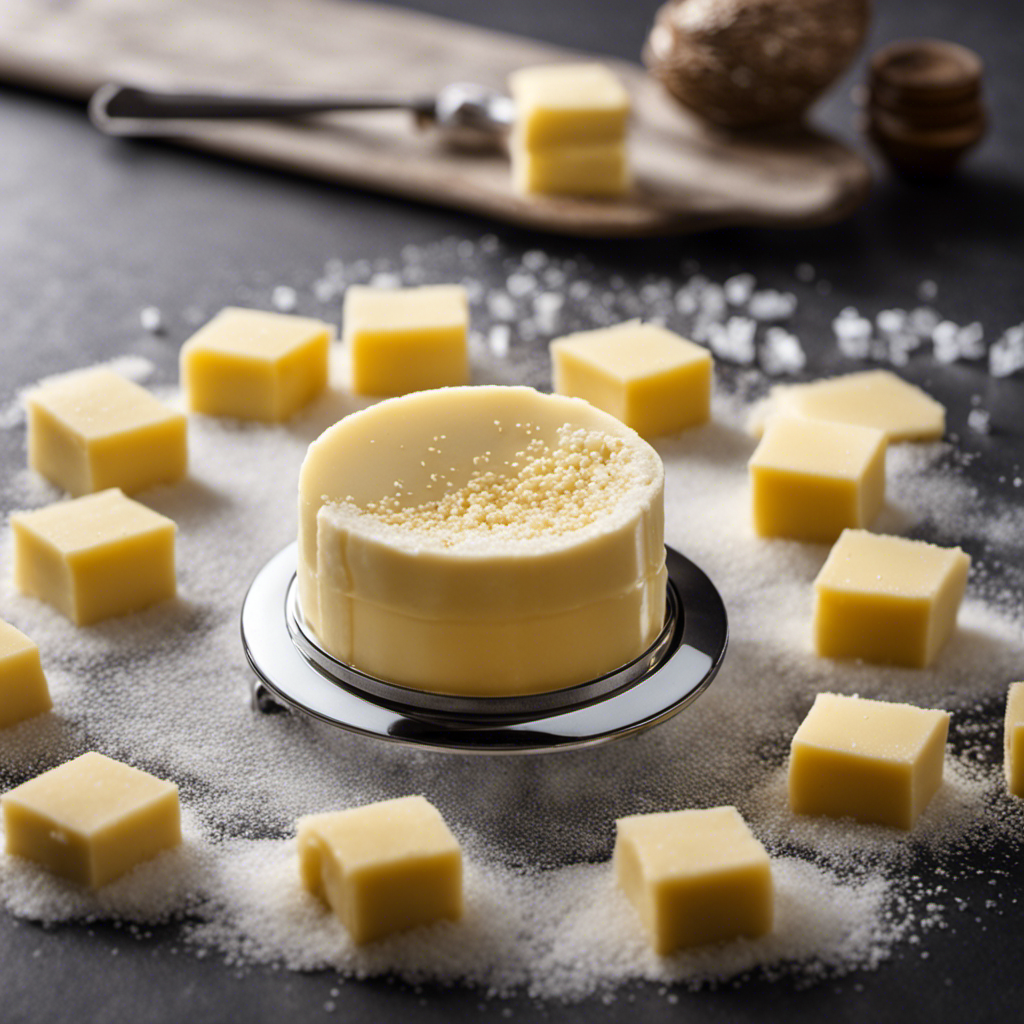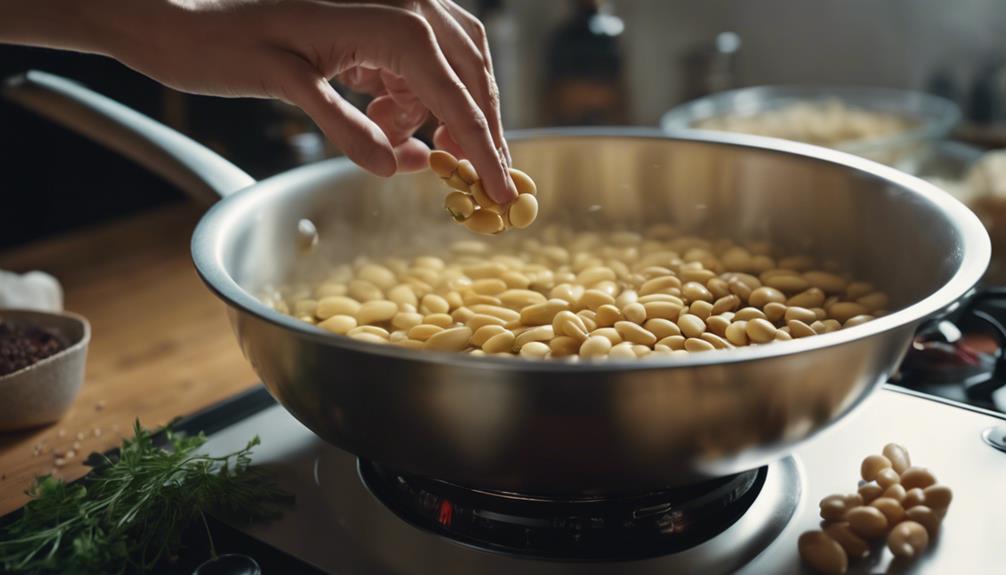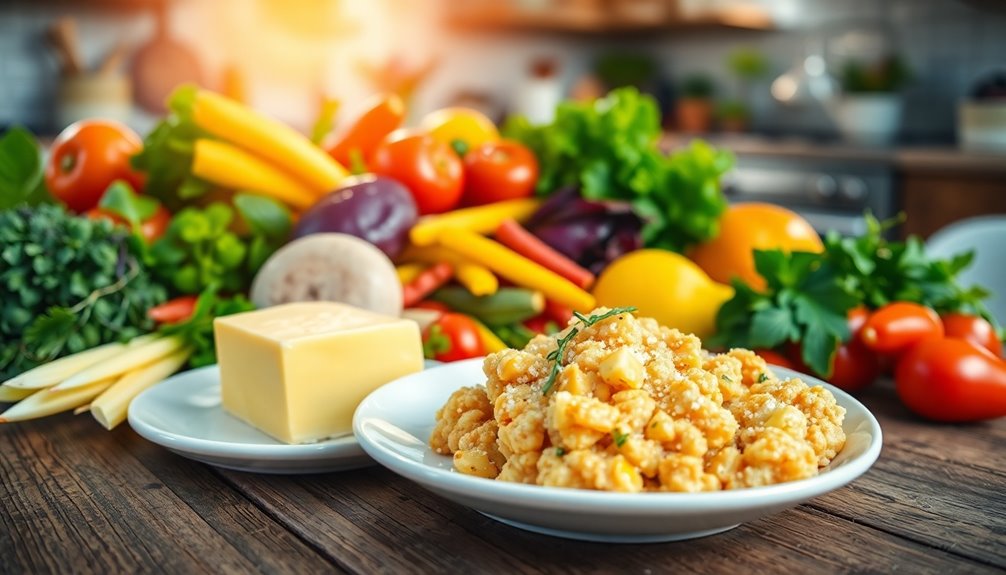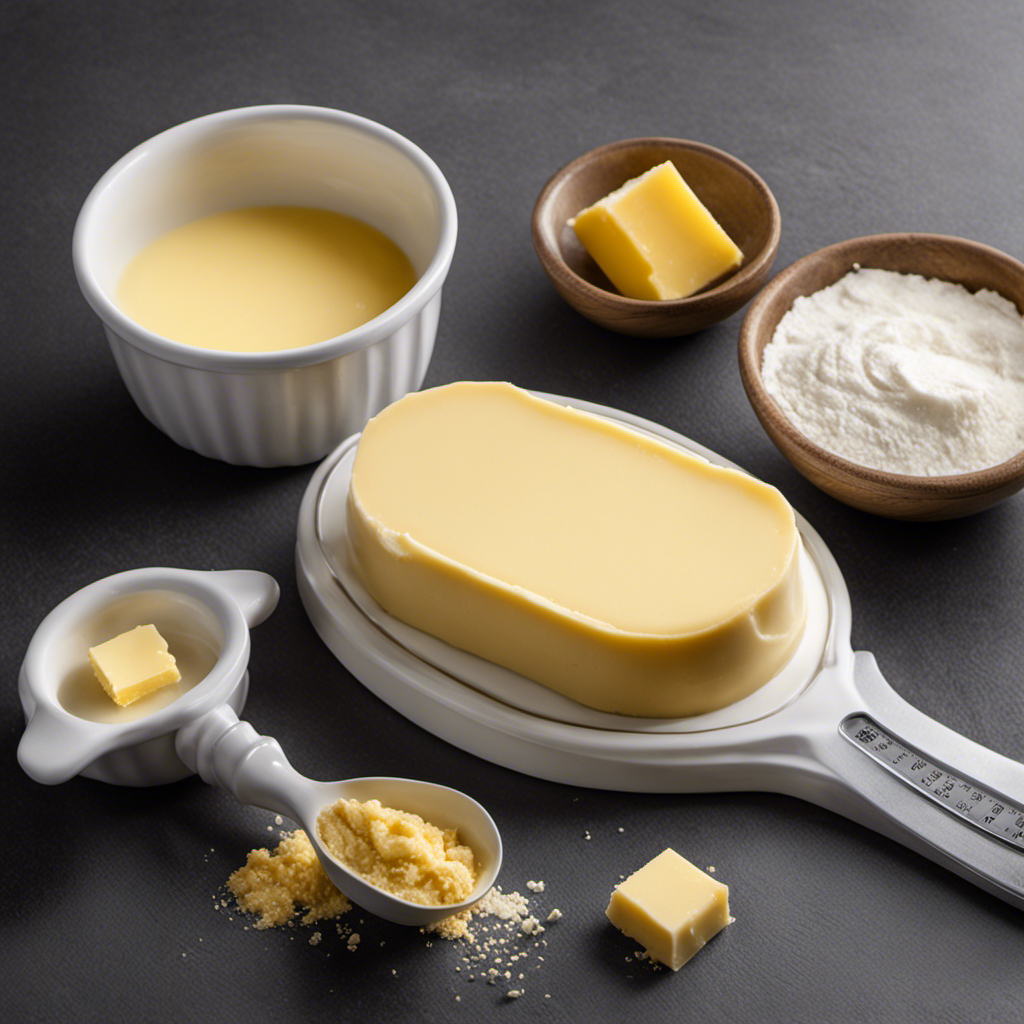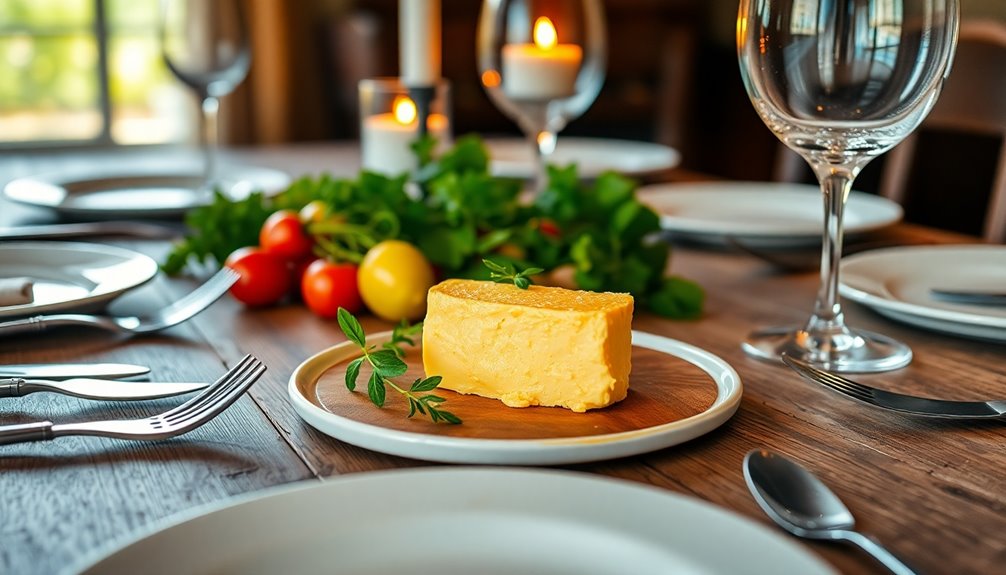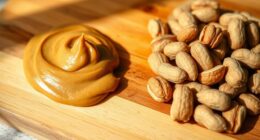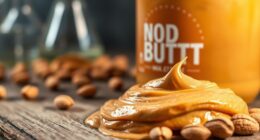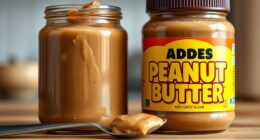While delving into the realm of butter and its sodium content, I can’t help but wonder: just how much salt is lurking within?
Join me on this journey as we uncover the role of salt in butter, examine the varying sodium levels across different brands, and explore the factors that influence its salt content.
Armed with research-based evidence, we will equip ourselves with tips to reduce our salt intake while still savoring the creamy delight that is butter.
So, let’s dive in and discover the hidden secrets of our beloved spread.
Key Takeaways
- Salt enhances the flavor of butter by balancing its natural richness and adding a subtle tang.
- Salt acts as a preservative by inhibiting the growth of bacteria and microorganisms.
- Butter contains an average of 90 milligrams of sodium per tablespoon, so it’s important to be mindful of overall sodium intake.
- Choosing unsalted butter, opting for whipped butter, trying plant-based spreads with lower sodium content, and making flavored butter at home can help reduce salt intake while still enjoying the taste and texture of butter.
The Role of Salt in Butter
You might be wondering why salt is added to butter and what role it plays in its flavor and preservation.
Salt is an essential ingredient in butter production, serving multiple purposes.
Firstly, salt enhances the flavor of butter by balancing its natural richness and adding a subtle tang. This is particularly important in unsalted butter, where the absence of salt can make it taste bland.
Secondly, salt acts as a preservative by inhibiting the growth of bacteria and other microorganisms that can cause spoilage.
Additionally, salt affects the texture of butter by helping to stabilize its water content. It can prevent the butter from becoming too soft or greasy, providing a desirable consistency for spreading and baking.
Thus, salt plays a crucial role in both the flavor and preservation of butter, as well as influencing its texture.
Understanding Sodium Levels in Butter
There’s an important factor to consider when it comes to understanding the sodium levels in butter.
While butter is known for its rich taste and creamy texture, it also contains a significant amount of sodium. Sodium content in butter can vary depending on the brand and type, but on average, it contains about 90 milligrams of sodium per tablespoon.
This may not seem like much, but it can add up quickly, especially if you consume large amounts of butter regularly. It’s also worth noting that other dairy products such as cheese and yogurt can have even higher sodium content.
High sodium intake has been linked to various health effects, including high blood pressure and increased risk of heart disease. Therefore, it’s important to be mindful of your overall sodium intake and consider healthier alternatives to butter when possible.
Factors Affecting Salt Content in Butter
When it comes to understanding the sodium levels in butter, it’s important to consider the factors that affect its salt content. There are several key factors that can influence the quality of butter and the amount of salt it contains.
One of the main factors is the type of cream used to make the butter. Cream from cows that are fed a high-salt diet will naturally have higher levels of salt in the resulting butter. Additionally, the processing methods used can also impact the salt content. For example, if the butter is washed during production, some of the salt will be removed, resulting in a lower sodium level.
It’s important to note that salt plays a crucial role in enhancing butter flavor, so finding the right balance is key. With these factors in mind, let’s now explore how different butter brands compare in terms of their salt levels.
Comparing Salt Levels in Different Butter Brands
To compare the salt levels in different brands, take a look at how they vary in terms of their sodium content. Conducting a comparative analysis of salt content in butter alternatives is crucial in understanding the variations in salt levels among butter brands.
Salt plays a vital role in enhancing the taste and texture of butter-based recipes. However, excessive salt can lead to health issues such as high blood pressure. It is important to find a balance between taste and health.
Research has shown that different butter brands have different sodium content, with some brands opting for lower salt levels to cater to health-conscious consumers. By examining the sodium content of various butter brands, we can make informed choices that meet our dietary preferences without compromising on taste and texture.
Tips for Reducing Salt Intake in Butter
If you’re looking to reduce your sodium intake while still enjoying the rich flavor of butter, try opting for lower-salt alternatives. Here are some tips for reducing salt intake in butter:
-
Choose unsalted butter: Look for unsalted butter options in the grocery store. These butters have little to no added salt, allowing you to control your sodium intake.
-
Use whipped butter: Whipped butter has air incorporated into it, which reduces the overall amount of butter you use. This can help lower your sodium intake while still enjoying the taste.
-
Try plant-based spreads: Plant-based spreads, such as avocado or olive oil spreads, can be a healthier alternative to butter. These spreads often have lower sodium content and provide heart-healthy fats.
-
Make your own flavored butter: By making your own flavored butter, you can control the amount of salt added. Use herbs, spices, and citrus zest to enhance the flavor without adding excessive sodium.
Frequently Asked Questions
Does All Butter Contain the Same Amount of Salt?
All butter brands have varying salt content, which impacts the flavor. Research shows that salt enhances the taste of butter, but excessive amounts can overpower it. Therefore, it is important to consider salt levels when choosing butter.
How Does the Salt Content in Salted Butter Compare to Unsalted Butter?
The salt content in salted butter differs from unsalted butter. It impacts taste and cooking applications. Additionally, salt acts as a preservative, increasing the shelf life of butter by inhibiting bacterial growth.
Is It Possible to Find Butter With No Added Salt?
It is possible to find low sodium butter options by choosing unsalted butter. When comparing salted vs. unsalted butter in recipes, the choice depends on personal preference and desired level of saltiness.
Can the Salt Content in Butter Vary Depending on the Region It Is Produced In?
Regional variations in salt content in butter do exist. However, the impact of salt on taste varies among individuals. It is crucial to consider personal preferences when choosing butter with the desired level of saltiness.
Are There Any Health Risks Associated With Consuming Too Much Salt in Butter?
Consuming too much salt in butter can lead to health risks. It is important to be mindful of our recommended intake. While butter does provide some health benefits, moderation is key to maintaining a balanced diet.
Conclusion
As I conclude my research on the salt content in butter, I am reminded of the delicate balance between flavor and health.
Like a tightrope walker gracefully gliding across a thin wire, butter manufacturers must navigate the fine line of sodium levels in their products.
Through careful consideration of factors such as production methods and ingredient choices, they strive to create butter that satisfies our taste buds while keeping our sodium intake in check.
Remember, my fellow butter enthusiasts, balance is key, and moderation is our ally on this flavorful journey.
